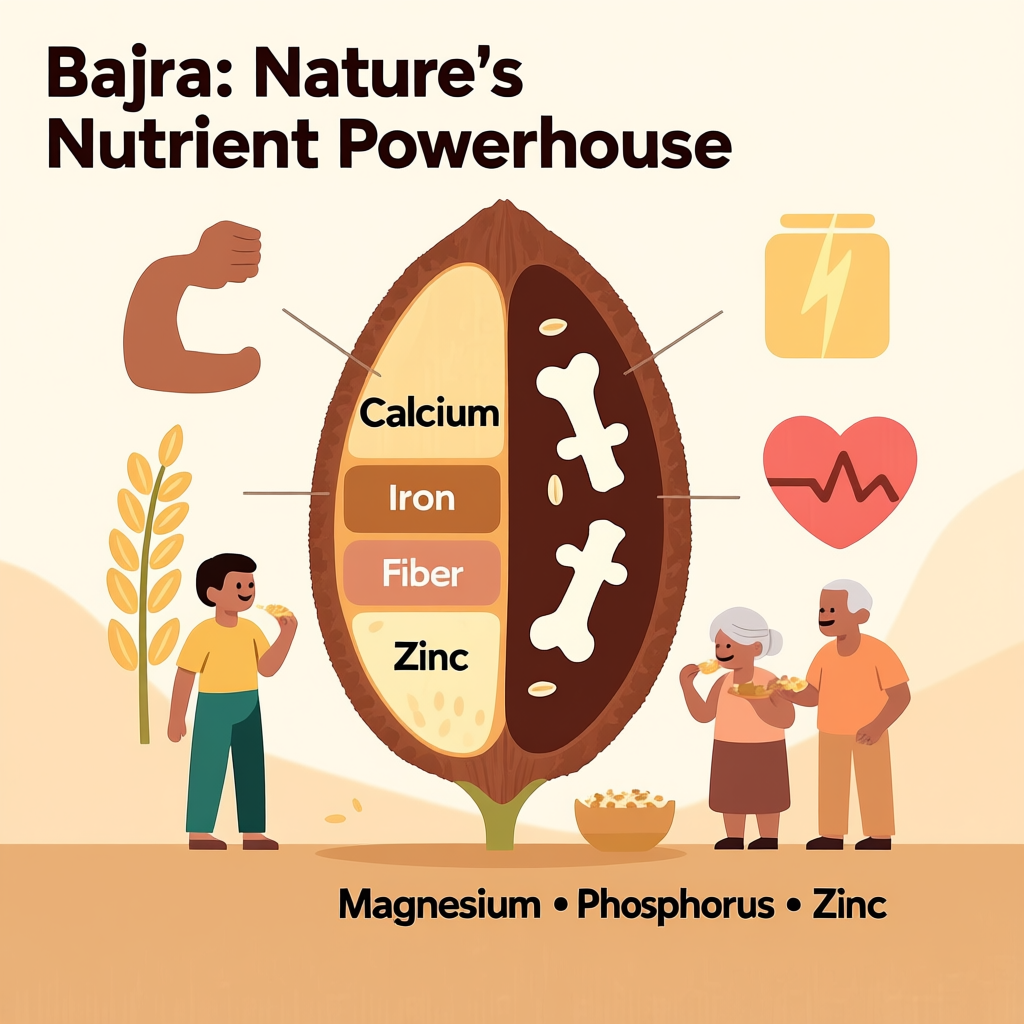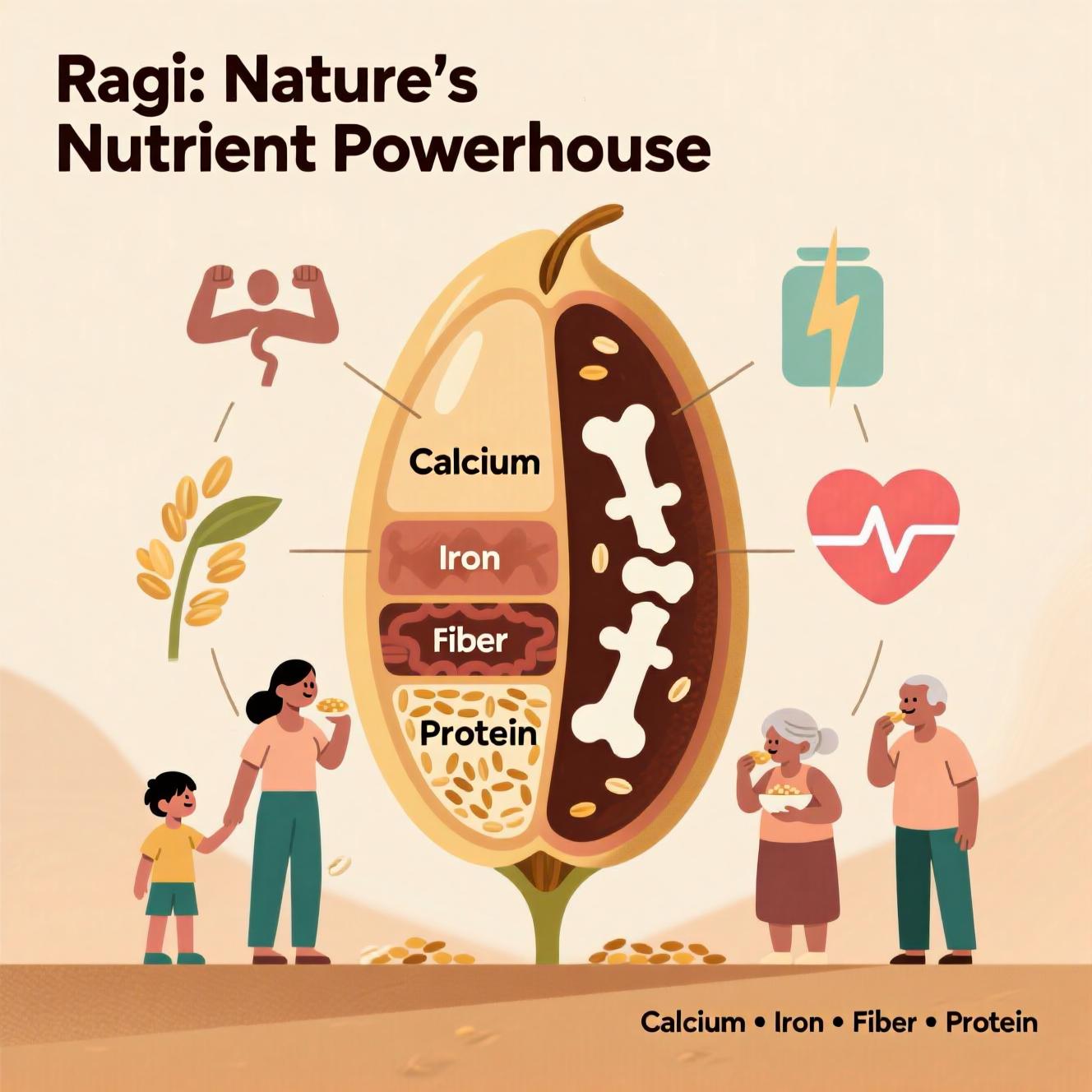What is Bajra?
- Common Name: Pearl Millet
- Botanical Name: Pennisetum glaucum
- Appearance: Small, round, light to dark greyish-brown grains
- Taste: Slightly nutty and earthy
- Gluten-Free: Yes – safe for people with celiac disease or gluten sensitivity
- Cultivation: Grown in hot, dry climates – especially in Rajasthan, Gujarat, Haryana, and Maharashtra in India
Why is Bajra a Good Food Compared to Other Millets?
While all millets are nutritious, bajra stands out for several reasons:
Advantage: Bajra is more filling and energy-dense, making it excellent for people in cold regions or those doing heavy physical labor.
Nutrients Present in Bajra (per 100g raw)
It is also rich in complex carbohydrates, which release energy slowly, helping maintain blood sugar levels.
Best Time to Eat Bajra
- Winter Season: Ideal due to its heat-generating (Ushna) properties in Ayurveda.
- Morning or Lunch: Best consumed during the day when metabolism is high to digest its dense nature.
- Avoid at Night: Can be heavy to digest, especially for people with slow digestion or Kapha imbalance in Ayurveda.
Not recommended in summer or for people with high Pitta (heat) conditions.
What to Mix with Bajra for Better Nutrient Absorption?
Bajra is nutritious but has phytic acid and tannins, which can reduce mineral absorption (like iron and zinc). To enhance bioavailability:
Example: Bajra roti with curd and sautéed spinach (rich in Vit C) = optimal iron absorption.
Health Benefits of Bajra
- Controls Blood Sugar
– Low glycemic index (GI), high fiber → helps manage diabetes. - Improves Digestion
– High fiber content prevents constipation and supports gut microbiome. - Supports Heart Health
– Magnesium helps regulate blood pressure; fiber lowers bad cholesterol (LDL). - Prevents Anemia
– Rich in iron and folic acid – excellent for pregnant women and anemic individuals. - Boosts Bone Health
– High in phosphorus and calcium – supports strong bones and teeth. - Aids Weight Management
– High satiety due to fiber and protein → reduces overeating. -
Natural Detoxifier
– Antioxidants help fight free radicals and reduce inflammation. - Good for Thyroid Health (when balanced)
– Contains selenium and zinc, but should be eaten in moderation if you have hypothyroidism (due to goitrogenic compounds when eaten raw/excessively).
Best For Which Diseases/Conditions?
Caution:
- People with hypothyroidism should consume bajra in moderation and ensure it’s well-cooked, as raw or excessive intake may interfere with iodine uptake.
- Always balance with iodine-rich foods (like iodized salt, seafood).
How to Use Bajra in Diet?
- Bajra Roti / Bhakri – Traditional flatbread
- Bajra Dosa or Pesarattu – Fermented pancakes (mix with urad dal)
- Bajra Porridge (Kheer) – With milk, jaggery, nuts
- Bajra Upma / Pongal – Savory breakfast dish
- Bajra Sprouts – In salads for extra nutrition
- Bajra Flour in Baking – Muffins, cookies (gluten-free)




